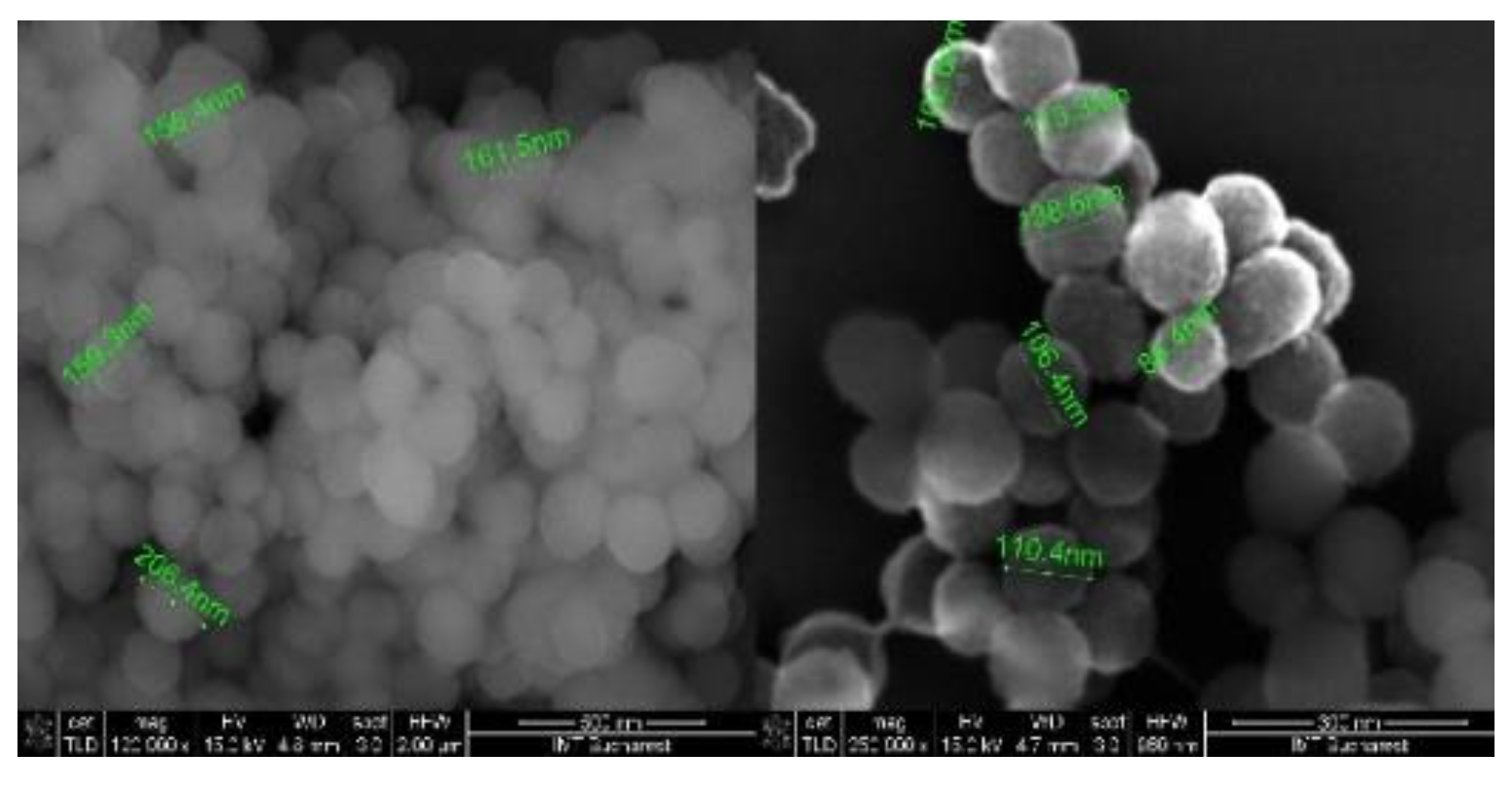Stabilization of Photosensitive Curcumin by Microencapsulation †
Acknowledgments
References
- Gusiak, N.B.; Kobasa, I.M.; Kurek, S.S. Nature inspired dyes for the sensitization of titanium dioxide photocatalyst. CHEMIK 2013, 67, 1191–1198. [Google Scholar]
- Lim, J.; Bokare, A.D.; Choi, W. Visible light sensitization of TiO2 nanoparticles by a dietary pigment, curcumin, for environmental photochemical transformations. RSC Adv. 2017, 7, 32488–32496. [Google Scholar] [CrossRef]
- Jaffar, H.I.; Hussein, S.I. Preparation and some characterization of curcumin-silica materials by sol-gel method. IJARSET 2015, 6, 1153–1160. [Google Scholar]
- Banerjee, C.; Maiti, S.; Mustafi, M.; Kuchlyan, J.; Banik, D.; Kundu, N.; Dhara, D.; Sarkar, N. Effect of encapsulation of curcumin in polymeric nanoparticles: How efficient to control ESIPT process? Langmuir 2014, 30, 10834–10844. [Google Scholar] [CrossRef] [PubMed]

Publisher’s Note: MDPI stays neutral with regard to jurisdictional claims in published maps and institutional affiliations. |
© 2020 by the authors. Licensee MDPI, Basel, Switzerland. This article is an open access article distributed under the terms and conditions of the Creative Commons Attribution (CC BY) license (https://creativecommons.org/licenses/by/4.0/).
Share and Cite
Buliga, D.-I.; Diacon, A.; Asofiei, I.; Boscornea, C. Stabilization of Photosensitive Curcumin by Microencapsulation. Proceedings 2020, 57, 96. https://doi.org/10.3390/proceedings2020057096
Buliga D-I, Diacon A, Asofiei I, Boscornea C. Stabilization of Photosensitive Curcumin by Microencapsulation. Proceedings. 2020; 57(1):96. https://doi.org/10.3390/proceedings2020057096
Chicago/Turabian StyleBuliga, Diana-Ioana, Aurel Diacon, Ioana Asofiei, and Cristian Boscornea. 2020. "Stabilization of Photosensitive Curcumin by Microencapsulation" Proceedings 57, no. 1: 96. https://doi.org/10.3390/proceedings2020057096
APA StyleBuliga, D.-I., Diacon, A., Asofiei, I., & Boscornea, C. (2020). Stabilization of Photosensitive Curcumin by Microencapsulation. Proceedings, 57(1), 96. https://doi.org/10.3390/proceedings2020057096






